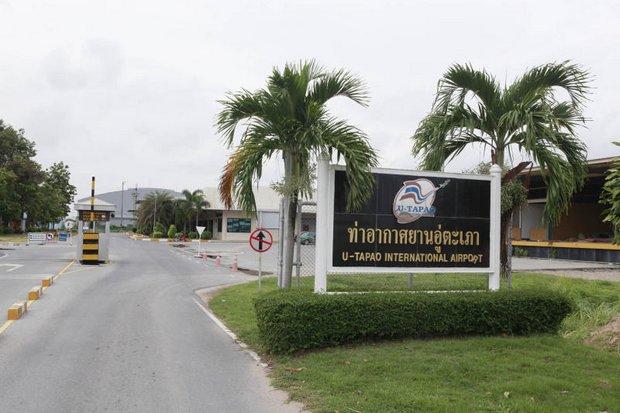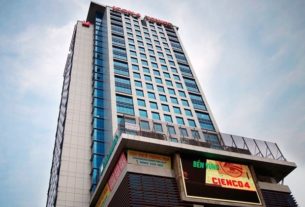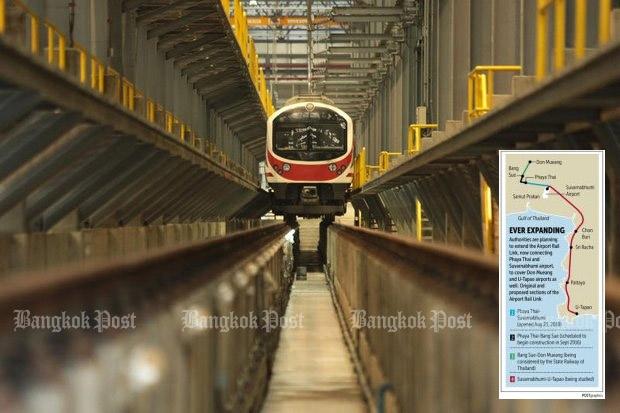As Thailand’s flood crisis deepens with the government telling Bangkok’s residents to leave the capital if possible, a team of water management experts have proposed that the government build new “water motorway” to reduce the damage of flooding in Bangkok in the long run.
“By nature this entire area [Bangkok] is a floodway, so we should take the opportunity and manage it rightly,” said Chawalit Chantararat, managing director of Team Group’s water resources business unit, pointing a finger at the red flood-prone zone on a map of Bangkok.
The map shows the flood-prone zone interspersed with blue patches indicating the presence of water which has been “locked up” and prevented from flowing freely into the sea by the roads.
Mr Chawalit hopes to turn the recent flood crisis into an opportunity by proposing the construction of a “water motorway” on an inherently flood-prone area east of Bangkok, to channel excess flood waters into the sea as well as to utilise it for the navigation of cargo ships.
Team Group is a Bangkok-based engineering and consultancy firm with more than 30 years’ experience in water resources development and environmental management.
The “water motorway” is, in essence, a large water canal that will run in close proximity and parallel to a new motorway along the eastern wing of a yet to be constructed third ring road around Bangkok.
At present two ring roads have been developed, inner and outer, around Bangkok to help ease motor congestion.
The first ring road is Ratchadaphisek, which runs through inner Bangkok. The second or outer ring road, is Kanchanapisek which extends into neighbouring Pathum Thani in the North, Samut Prakan in the East, Nonthaburi to the West and completes the circuit by joining with the industrial ring road in the South.
The third ring road, expected to be constructed by the Transport Ministry in the near future, will encircle the first two and extend further into Ayutthaya, Pathum Thani, Nonthaburi, Nakhon Pathom and Samut Prakan.
This water motorway multi-purpose project would function not only as a canal to drain excess water coming into Bangkok from outlying provinces and alleviate flooding in the capital, but would also be utilised to navigate ships in and out of the canal from the mouth of the river all the way up to Ayutthaya where the canal meets the Chao Phraya River.
According to Mr Chawalit, the canal would be 8 metres deep, 180 metres wide, 100 kilometres long and take 7 years to complete.
“The reason it is designed of this size is because we want it to drain out around 80 million cubic metres of water per day from Bangkok and also to easily accommodate a two-way navigational route for cargo ships of not more than 3,000 tonnes.”
The entire construction is expected to cost about 220 billion baht. This includes the main waterway, a two-way motorway for automobiles, two large barrages and two navigational locks at either end of the canal, Mr Chawalit explained.
“We envisage a very developed landscape for this area in the future similar to other parts of Bangkok with high-rise buildings, condominiums, restaurants and such like,” Mr Chawalit said.
Areas around it could also be used for agricultural purposes since water from the canal can be used for irrigation, he said.
“However, all this is not going to be an easy task.” The mission is in fact barely possible, according to Mr Chawalit, as it means building a 100km-long waterway that will cut through five provinces, superhighways and quite a few residential areas.
This will inevitably draw opposition from residents, local authorities, landlords, as well as the government.
“We will have to relocate people from the areas designated. We will have to offer them enough value for land appropriation, and they should also have the chance to participate in deciding on the future of this area,” said Mr Chawalit.
“So, we have to talk to the community about the management of profits from this area of land appropriated from them. For instance, if we develop this area into a big urban community, there are many ways that we can go about doing it _ we can enable those affected to become co-shareholders with the government,” he said.
Also, he said that the government could arrange the allocation of land plots, similar to the idea of farmland allocation.
“We can combine everyone’s land and develop the area to have all the necessary infrastructure such as irrigation canals and roads where landlords can share benefits from the land,” he said.
“It’s like changing their way of life entirely, as this flood prone area would become a canal used for tourism, transportation and navigation of ships as well as a motorway on the ring road and other local roads that would grow,” he said.
Mr Chawalit also mentioned that in order to urbanise this area, there would have to be a development plan under the Land Reform law. “In the past only laws for agricultural land restructuring and consolidation existed, so now we have to see how we can bring about a land consolidation law for the purpose of urban development. This is of course possible if politicians agree, because they can change cabinet announcements,” he said.
In addition to the water motorway, Team Group’s flood expert also suggested two other ways of water management to mitigate flooding. “To alleviate the risk of flooding in areas around Sukhothai and [provinces immediately below it], there is a necessity to build something in the Yom River basin, and in this case dams would be the most appropriate as they can retain water,” he said.
Originally, there was a plan to build a dam that would be able to hold 3 billion cubic metres of water in the Mae Yom National Park, widely known as Kaeng Sua Ten, in Phrae and Lampang. But because some considered it is inappropriate, the size was reduced to 700 million cubic metres. “If the we can build even the 700 million cu.m. dam, flooding difficulties particularly in Phrae and Sukhothai would be alleviated,” said Mr Chawalit.
Another solution to help ease flooding in the central region would be to build a “monkey’s cheek” in Phitsanulok’s Bang Rakam district and Boraphet freshwater lake in Nakhon Sawan, which are geographically natural water containment areas, he said.
“Money cheek” is a water retention mechanism whereby excess water is stored in a catchment area to avoid flooding. This water will later be utilised for various purposes and the excess is allowed to drain out slowly.
“We have conducted studies as to how people can learn and adjust to living with water, as well as where it would be most suitable to build canals and dykes and where sluice gates should be placed to regulate water in the monkey cheek,” he said.
At present the government has already received support from most citizens in lower areas of Tha Wung in Lop Buri, Phak Hai and Bang Ban in Ayutthaya to construct monkey cheek catchment areas.
“Currently there are many people who are utilising water in the canals that were created more than 50 years ago which actually belong to the Royal Irrigation Department. They will say that their grandparents and forefathers had lived and died there without knowing that the land actually belonged to the state.
“So we would have to talk and negotiate with all of them living along the hundreds of kilometres of the klong because we really have the necessity to use it now,” Mr Chawalit explained.
http://www.bangkokpost.com/opinion/opinion/263715/water-motorway-to-keep-floods-away-from-capital


